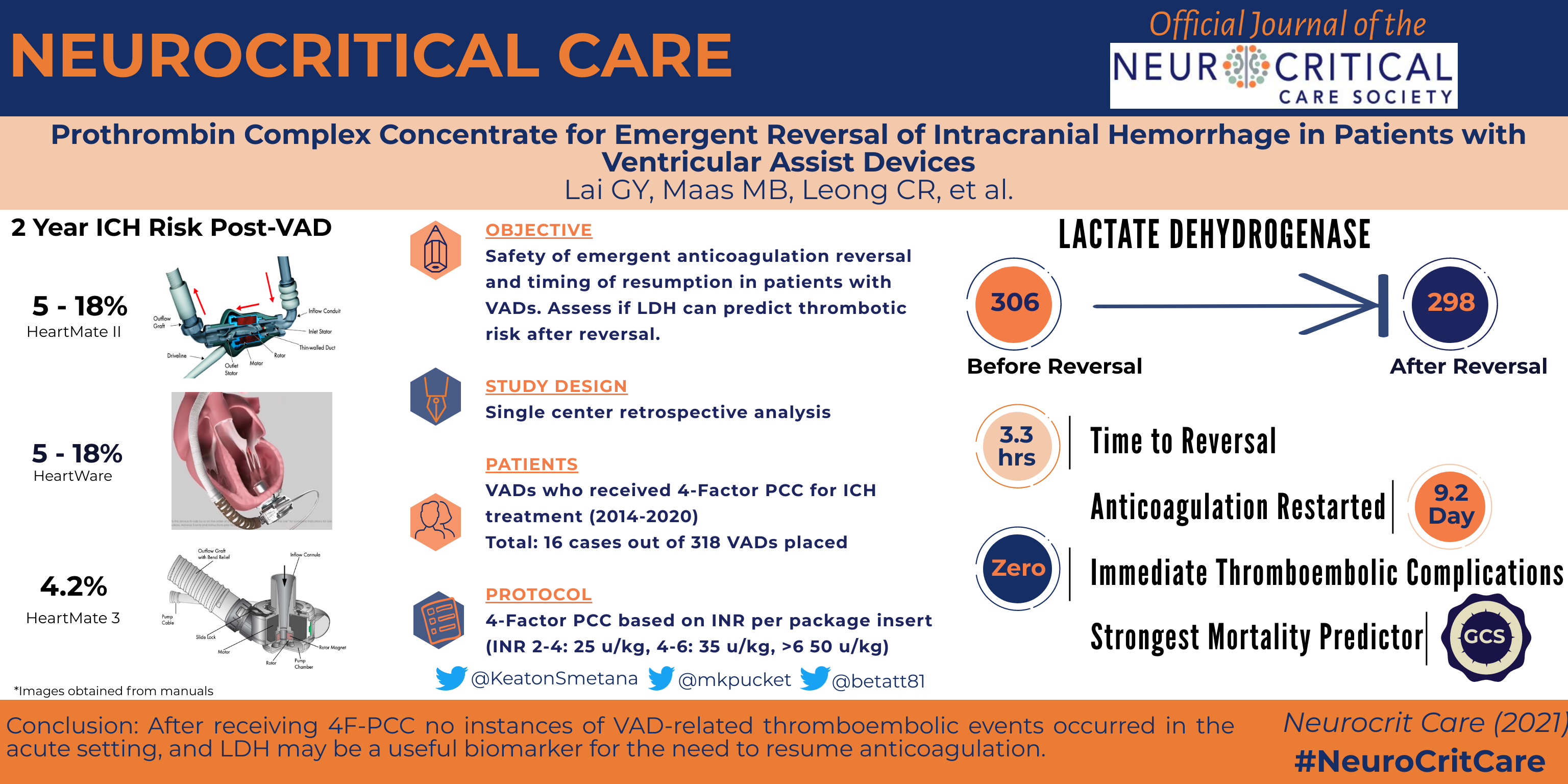By Grace Y. Lai, Matthew B. Maas, Christopher R. Leong, Eric M. Liotta, Jonathan D. Rich, Duc T. Pham, Esther E. Vorovich, Andrew M. Naidech, Babak S. Jahromi & Matthew B. Potts
First Online: 05 April 2021

Background
Intracranial hemorrhage (ICH) is a devastating complication for patients with ventricular assist devices (VADs). The safety of emergent anticoagulation reversal with four-factor prothrombin complex concentrate (PCC) and optimal timing of anticoagulation resumption are not clear. In addition, lactate dehydrogenase (LDH) is used as a biomarker for thromboembolic risk, but its utility in guiding anticoagulation management after reversal with PCC has not be described.
Methods
We retrospectively reviewed a consecutive series of patients with VADs presenting with ICH between 2014 and 2020 who received four-factor PCC for rapid anticoagulation reversal. We collected the timing of PCC administration, timing of resumption of anticoagulation, survival, occurrence of thromboembolic events, and LDH levels throughout hospitalization.
Results
We identified 16 ICH events in 14 patients with VADs treated with rapid anticoagulation reversal using four-factor PCC (11 intraparenchymal, 4 subdural, 1 subarachnoid hemorrhage). PCC was administered at a mean of 3.3 ± 0.3 h after imaging diagnosis of ICH. Overall mortality was 63%. Survivors had higher presenting Glasgow Coma Scale (median 15, interquartile range [IQR] 15–15 versus 14, IQR 8–14.7, P = 0.041). In all six instances where the patient survived, anticoagulation was resumed on average 9.16 ± 1.62 days after reversal. There were no thromboembolic events prior to resumption of anticoagulation. Three events occurred after anticoagulation resumption and within 3 months of reversal: VAD thrombosis in a patient with thrombosis at the time of reversal, ischemic stroke, and readmission for elevated LDH in the setting of subtherapeutic international normalized ratio.
Conclusions
Our limited series found no thromboembolic complications immediately following anticoagulation reversal with PCC prior to resumption of anticoagulation. LDH trends may be useful to monitor thromboembolic risk after reversal.
Read the full article here.